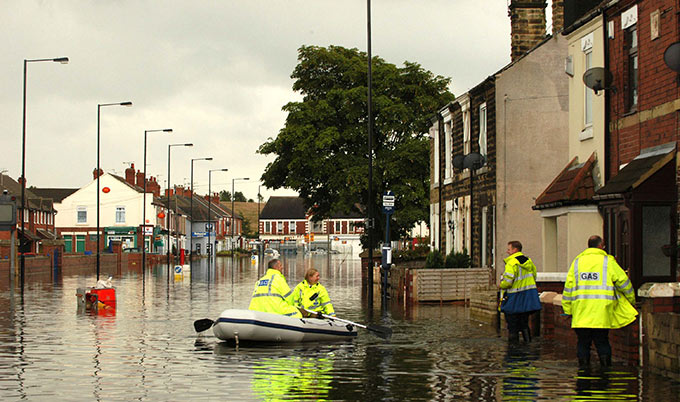Green roofs in city could reduce travel disruption
Green roofs in city could reduce travel disruption during flooding
Published on: 17 May 2016
Travel times in the event of a flood on the scale of ‘Thunder Thursday’ could be improved by more than a quarter if a city-wide green roof strategy was adopted, experts say.
Blue Green Infrastructure
Using Newcastle city centre as a case study, researchers at Newcastle University compared the effectiveness of urban ‘blue green infrastructure’ such as green roofs, ponds, and water channels with traditional engineering measures such as culverts or flood walls in reducing transport disruption during extreme rainfall events like the one that occurred on 28 June 2012, and became known as 'Thunder Thursday'.
In research published in the Royal Society Open Science journal, they found that greening every roof in the city could reduce travel disruption by just over 25%.
Blue green infrastructure uses natural processes to store rainwater and decrease the amount released onto roads and pavements. As a result, the depth of flooding is reduced which can make its impact more manageable.
Richard Dawson, Professor of Earth Systems Engineering, Newcastle University, said: “We saw on Thunder Thursday the massive amount of damage and disruption that flooding can have on our transport networks. Even for relatively frequent events such as a one in 10 years flood, travel journeys can be significantly delayed – particularly during the rush hour - so it is crucial to understand the impact that different flood events could have.
“We found that both traditional drainage measures and blue green infrastructure led to a reduction in travel network delays. Blue green infrastructure can provide city-wide benefits, whilst more traditional engineering solutions can provide substantial, but often more localised, benefits - so both options should form part of urban flood risk management strategies.”

New approach
PhD student Maria Pregnolato, who led the study, added: “By modelling the existing transport network and analysing it alongside flood risk we can build a framework which allows us to see the benefit that different adaptations could have. Furthermore, by analysing traffic flows in conjunction with flood mapping, we have been able to identify the most critical junctions and stretches of road. This is a completely new approach which can help planners identify and prioritise parts of the road network where flood risk management measures will achieve the greatest return on investment.
“The great advantage of this new model is that it can be applied to future scenarios and a range of potential adaptation strategies, and although we looked at the specific case study of Newcastle it could also be used for other UK or European cities.”
Although there are large green spaces across the Newcastle City Council area, the majority of the city centre is made up of impermeable land, meaning that rainfall runs straight off during storms making the area particularly vulnerable to flash flooding. While the research team acknowledges that implementing a universal green roof strategy may not be a realistic option in the short-term, they say that blue green infrastructure provides other benefits such as improved wellbeing and greater biodiversity which should be considered by urban planners.
Managing flood risk
Earlier this year, Newcastle City Council and its partners including Newcastle University, the Environment Agency, Northumbrian Water, Arup and Royal HaskoningDHV became the first organisations to sign the Newcastle Declaration on Blue and Green Infrastructure, a formal commitment to a blue green approach to managing flood risk in the city.
Additionally, a new £10m state-of-the-art urban water facility, announced in the 2015 Budget as part of Newcastle University’s key role in the UK Collaboratorium for Research in Infrastructure and Cities, is set to open next year and will enable experimentation and testing of new ‘smart’ technologies and urban flood management features.
Helping to bring about an improved understanding of critical infrastructure systems, the new facility will be part of the Urban Sciences Building at Science Central – Newcastle’s flagship project which brings together academia, the public sector, communities, business and industry to create a global centre for sustainable innovation in the heart of the city.



